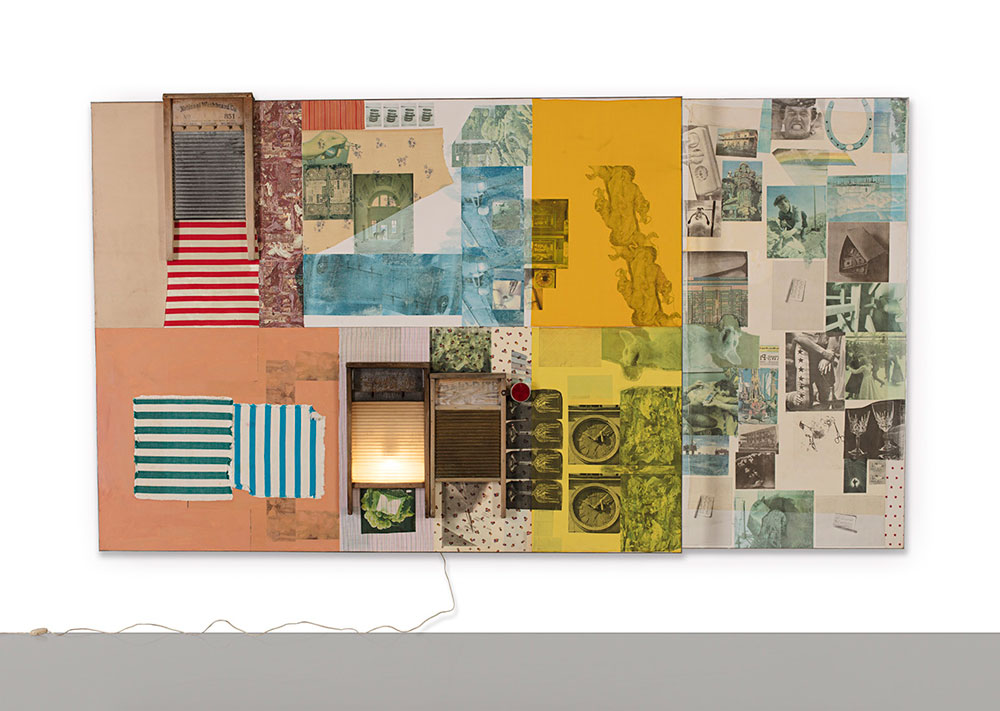ART-PRESENTATION: Robert Rauschenberg, Spreads 1975-83
 Robert Rauschenberg grew up in Texas and Louisiana, and was very influenced by Southern art and culture, from its quilting traditions to its unique landscape. His large-scale series “Spreads” (1975-83) encapsulates his best-known motifs and materials. The term is used to describe a wide expanse of land as well as a fabric covering for a bed.
Robert Rauschenberg grew up in Texas and Louisiana, and was very influenced by Southern art and culture, from its quilting traditions to its unique landscape. His large-scale series “Spreads” (1975-83) encapsulates his best-known motifs and materials. The term is used to describe a wide expanse of land as well as a fabric covering for a bed.
By Dimitris Lempesis
Photo: Galerie Thaddaeus Ropac Archive
In the 1970s and 1980s, many artists began working with non-traditional materials that they often cut out of magazines, scavenged in junkyards, or found on city streets. Incorporating this vast range of everyday objects and images, Rauschenberg sought to create a bridge art and life so that he, as he said, could “Act in the gap between the two”. In the exhibition “Spreads 1975-83”, at Ropac Gallery in London gallery are on presentation twelve key works from the series also a series of paper collages from the same period is exhibited, incorporating fabrics and techniques that relate to the “Spreads” series. Asked about his use of the term “Spread”, Rauschenberg responded that it meant “as far as I can make it stretch, and land (like a farmer’s spread), and also the stuff you put on toastâ”. This term also clearly refers to the scale of the works, with their large, fabric-covered supports that stretch across the wall. The first work in the series, “Yule 75”, was created in December 1975 and cut into 56 irregular pieces that Rauschenberg distributed to his friends as Christmas gifts. Another of the earliest, “Rodeo Palace” (1976) was commissioned for the exhibition “The Great American Rodeo” at the Fort Worth Art Museum, and later included in Rauschenberg’s 1976 retrospective. In 1970, Rauschenberg established his permanent home in Captiva Island, Florida, where he created several series of works focused on materiality, including the “Cardboards”, wall sculptures created from discarded boxes, and the silken Jammers. His experimentation with printing techniques also continued across a range of media, including the fabric solvent-transfer “Hoarfrosts”, multimedia “Spreads” and his metal works from the 1980s–90s. In addition to his own artmaking practice, Rauschenberg became a spokesperson for artists and the creative community at large. In September 1970, he founded Change, Inc., a non-profit organisation that helped artists with emergency expenses and from 1984–91, he personally funded the Rauschenberg Overseas Culture Interchange (ROCI).
Info: Galerie Thaddaeus Ropac, Ely House, 37 Dover Street, London, Duration: 28/11/18-26/1819, Days & Hours: Tue-Sat 10:00-18:00, https://www.ropac.net/

